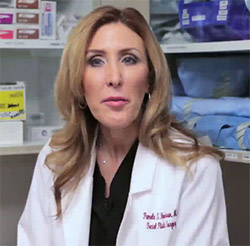How much fat survives after fat transfer?
How much fat survives after fat transfer?
Facial fat transfer Scottsdale
 If you’re looking for a method of adding lost volume back to the face, then you may have considered fat transfer. This method of facial rejuvenation has a few advantages over other methods (like implants or fillers). It uses only your own tissue, which some people consider to be the most natural option. The fat is taken from a different part of the body, meaning that you get to have fat removed from an area where you don’t want it (via liposuction) and then have it added to the face. In addition, if your weight remains relatively stable, the results of a fat transfer procedure are permanent, once you’re past the initial healing phase.
If you’re looking for a method of adding lost volume back to the face, then you may have considered fat transfer. This method of facial rejuvenation has a few advantages over other methods (like implants or fillers). It uses only your own tissue, which some people consider to be the most natural option. The fat is taken from a different part of the body, meaning that you get to have fat removed from an area where you don’t want it (via liposuction) and then have it added to the face. In addition, if your weight remains relatively stable, the results of a fat transfer procedure are permanent, once you’re past the initial healing phase.
However, it’s very important to recognize the limitations of fat transfer as well. When fat is moved from one part of the body to another, not all of the fat tissue will survive in its new location. How much of the fat tissue survives after fat transfer?
Fat transfer rate depends heavily on good surgical technique
The available studies on the survival of fat grafts after fat transfer show that there are widely varying rates of survival of the tissue after transfer. These vary from 30% to 83% in the facial area. This fat tissue will successfully develop a blood supply in its new location and will then remain, while the rest of the fat tissue will be reabsorbed by the body within the first few weeks.
Although the survival rate of transferred fat tissue varies widely, there’s no one particular technique that guarantees a higher rate of fat survival. Rather, fat survival is likely related to the skill with which the surgeon uses the technique. In order to help the fat survive the transfer process, it’s crucial that it be treated very carefully throughout the process. Unlike with standard liposuction, in which the removed fat will simply be discarded, removing fat for transfer requires that it be treated gently. As the fat is prepared and then injected, it must continue to be treated carefully, in order to avoid damage to the cells. This is why it’s important to choose a surgeon who has experience with fat transfer and performs it regularly.
What can you do to help fat survive after fat transfer?
The survival of transferred fat is also affected by postoperative care. What happens in the weeks after the procedure is crucial in determining how much fat tissue survives.
Putting any pressure on the treated area can reduce the amount of fat that survives. For example, when fat is transferred into the buttocks, it’s important not to sit or to lay down on the back for a few weeks after the procedure. For the face, this means not leaning your face on your hands, sleeping on your side, or otherwise putting external pressure on the face while the fat tissue is getting established in its new location.
Ensure that you’re eating a healthy diet with enough calories to help the transferred fat get established in its new location. Focus on eating healthy fats, including foods like avocados, salmon, nuts, and olive oil. This will help to provide your body with the nutrients that it needs to feed the transferred fat.
Whatever you do, don’t smoke during your healing period – not even one cigarette! Cigarette smoke contains compounds that inhibit blood flow, so smoking will reduce the amount of fat tissue that is able to establish a blood supply and survive. You’ll also want to pay attention to your exercise. Strenuous exercise could interfere with the fat’s survival, but light to moderate exercise is helpful to stimulate blood flow throughout the body (after the initial postsurgical healing period). It’s also absolutely crucial to avoid any sports that may cause falls or compression on the treated area. Several weeks after your procedure, you’ll be able to start getting back to your usual exercise regimen.
Facial fat transfer Scottsdale
 If you’re considering a facial fat transfer procedure, then choosing a surgeon with extensive experience in performing this procedure will maximize your chances of getting the great results you’re hoping for. Dr. Henderson is a specialized, double-board certified facial plastic surgeon, with years of experience in performing fat transfer procedures to the face. To learn more about facial fat transfer, we invite you to book a consultation with her.
If you’re considering a facial fat transfer procedure, then choosing a surgeon with extensive experience in performing this procedure will maximize your chances of getting the great results you’re hoping for. Dr. Henderson is a specialized, double-board certified facial plastic surgeon, with years of experience in performing fat transfer procedures to the face. To learn more about facial fat transfer, we invite you to book a consultation with her.

